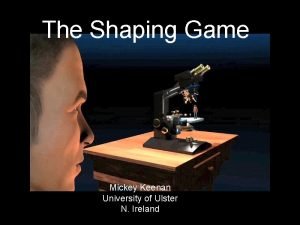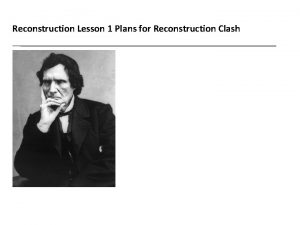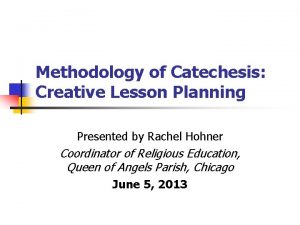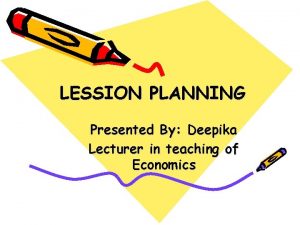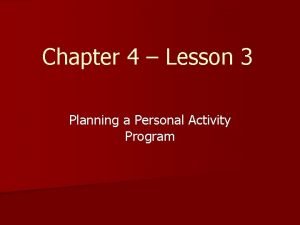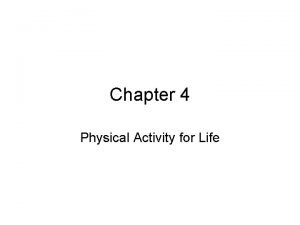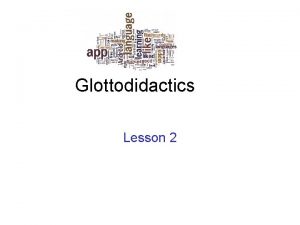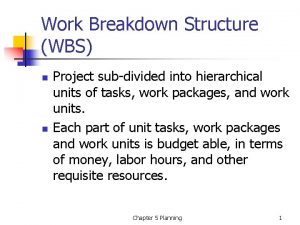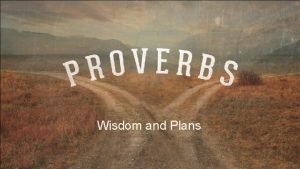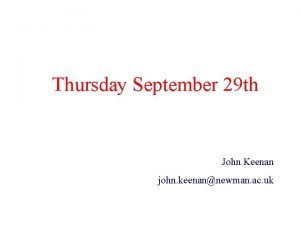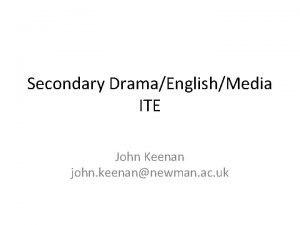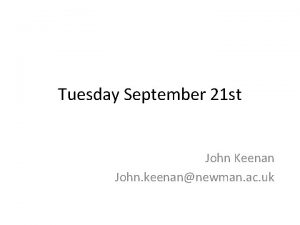Lesson Planning John Keenan John keenannewman ac uk



























































- Slides: 59

Lesson Planning John Keenan John. keenan@newman. ac. uk

Review of last week. What did you learn? Tuesday Pedagogy video

Student’s recall rate Listening Reading Students are Increasingly active, and challenged. Experience is increasingly practical and multi-sensory 5% 10 % Audio -Visual Demonstration Students Receive information 20 % 30 % Discussion groups 50 % Practice by doing 75 % Teach others/immediate use of learning 90 % Students Apply their Learning 25 ways of teaching without telling

Learning Strategy Already know Get attention Relevant Model Teams Goals Visuals Think and talk aloud Mnemonics Note taking Closure strategies – tell your partner what you know Adapted from Fulk 2000 cited in Sousa, 2001: 34

explanation test doing-detail role play use - practise class practical note taking check and corrected by peers, by teacher demonstration aide-memoir explanation review discussion question and answer evaluation tested under realistic conditions watching a video queries summarising What do you do? investigation Petty, 2004: p. 22 Action planning for the future.

Motivation John Keenan John. keenan@newman. ac. uk

MOTIVATION


Demotivation Antz

What is their motivation?

What Why is do their it? motivation?

The Diamond Choir from South Africa What Why is do their it? motivation?

What is. Why my do motivation? it?

Motivation or…Getting the Buggers to Learn 1. Recognise they are demotivated 2. Use external motivators to learning 3. Motivating teaching styles 4. Recognise the motivating power of peers 5. Tap into internal motivators 6. Stroke your students 7. Become Theory Y teachers 8. Vary ways of teaching

External Motivators to Learning Frederick Herzberg • Good feelings ( Motivators ) = achievement, recognition, responsibility, advancement and learning. • Bad feelings ( Hygiene Factors ) policy and administration, supervision and working conditions. Do not motivate in themselves but failure to meet them causes dissatisfaction

Recognise External Motivators they haveto failed Learning Hertzberg’s Hygiene Factors

Motivating teaching styles Teaching Styles disciplin lead organis provid explain arbit er counsell protect or evaluat

Motivating Lead teaching styles 1. Coercive Stanley Milgram we do what we’re told agentic state Glengarry

Motivating Lead teaching styles 2. Referent

Motivating Lead teaching styles 3. Expert

Motivating Lead teaching styles 4. Legitimate

Motivating Lead teaching styles 5. Reward Management

Motivating Lead teaching styles Coercive – motivation = Referent – motivation = Legitimate –motivation = Expert – motivation = Reward – motivation=

Recognise the motivating power of peers ‘Most children in school are at least afraid of the mockery and contempt of their peer group as they are of their teacher’ (Holt, 1990: p. ? ? ? ) The Hawthorne Studies People adjust their own motivation to match those of others, - ‘a social event’.

Tap into internal motivation Internal Motivation Abraham Maslow hierarchy of needs





























Tap into internal motivation Maslow’s Triangle Apply to teaching

Become Tap into Theory internal. Ymotivation teachers Mc. Clelland’s Theory suggests that people have three needs: • Achievement • Power • Affection personality defines – which one dominates Apply to teaching

Tap into internal motivation What motivates you? Apply to teaching

Stroke your students ‘Studies show that we as teachers do is overwhelmingly more influential than what we say…A teacher who talks to, smiles at, encourages and helps students of Asian and European origin equally, is teaching the students to respect everyone regardless of their origins. Such inadvertent teaching is sometimes called the ‘hidden curriculum’ (Petty, 2004: p. 19)

Become Theory Y teachers

 John keenan calgary
John keenan calgary Keenan summer research program
Keenan summer research program Keenan knaur
Keenan knaur Mickey keenan
Mickey keenan Roger keenan
Roger keenan Strategic planning vs tactical planning
Strategic planning vs tactical planning Planning balance sheet in urban planning
Planning balance sheet in urban planning Scenario planning workforce planning
Scenario planning workforce planning Proactive planning and reactive planning
Proactive planning and reactive planning Aggregate planning is capacity planning for:
Aggregate planning is capacity planning for: Short term planning and long term planning
Short term planning and long term planning Corpus planning definition
Corpus planning definition Aggregate planning is capacity planning for
Aggregate planning is capacity planning for Examples of aggregate planning
Examples of aggregate planning Andrew johnson’s plan
Andrew johnson’s plan Ppp lesson planning
Ppp lesson planning Micro planners of assessment
Micro planners of assessment Catechetical instruction lesson planning
Catechetical instruction lesson planning Morrison lesson plan steps
Morrison lesson plan steps Chapter 12 lesson 1 benefits of physical activity
Chapter 12 lesson 1 benefits of physical activity Personal activity plan
Personal activity plan Hunter's seven steps of lesson planning
Hunter's seven steps of lesson planning Constructive alignment in lesson planning
Constructive alignment in lesson planning Chapter 4 physical activity for life
Chapter 4 physical activity for life Unit 2 lesson 3 health insurance and financial planning
Unit 2 lesson 3 health insurance and financial planning Economics unit 2 lesson 7
Economics unit 2 lesson 7 Lesson outline lesson 3 describing circuits answers
Lesson outline lesson 3 describing circuits answers Kind of fault
Kind of fault Lesson outline lesson 2 aquatic ecosystems answer key
Lesson outline lesson 2 aquatic ecosystems answer key Ihi leadership alliance
Ihi leadership alliance Gift of chappals lesson plan
Gift of chappals lesson plan Chapter 1 lesson 1 your total health
Chapter 1 lesson 1 your total health Weather forecasts lesson 3 outline answers
Weather forecasts lesson 3 outline answers Sat vocabulary lesson and practice lesson 4
Sat vocabulary lesson and practice lesson 4 Lesson 3 physical changes answer key
Lesson 3 physical changes answer key The science duo physical and chemical changes
The science duo physical and chemical changes Unit 6 lesson 1 climates of the world
Unit 6 lesson 1 climates of the world Lesson outline lesson 2
Lesson outline lesson 2 Lesson 1 understanding science answer key
Lesson 1 understanding science answer key Fingerprint ridge characteristics worksheet
Fingerprint ridge characteristics worksheet Lesson outline lesson 1 land biomes answers
Lesson outline lesson 1 land biomes answers Lesson 4 gravity and motion lesson review
Lesson 4 gravity and motion lesson review Lesson 2 muscle storyboard
Lesson 2 muscle storyboard Lesson outline lesson 2 wave properties answer key
Lesson outline lesson 2 wave properties answer key Today's lesson or today lesson
Today's lesson or today lesson 1 important lesson that is worth sharing about this lesson
1 important lesson that is worth sharing about this lesson Example of repitition
Example of repitition Magnets and magnetic fields lesson 1 answer key
Magnets and magnetic fields lesson 1 answer key The sun-earth-moon system worksheet answers lesson 1
The sun-earth-moon system worksheet answers lesson 1 The night pirates activities ks1
The night pirates activities ks1 A forest english technique
A forest english technique Planning of a formal letter
Planning of a formal letter Work breakdown structure for planning a trip
Work breakdown structure for planning a trip Bad plans
Bad plans Why strategic planning is important to all managers?
Why strategic planning is important to all managers? Planning alternative tomorrows with hope
Planning alternative tomorrows with hope Defined planning
Defined planning Career planning checklist
Career planning checklist Zero base forecasting
Zero base forecasting Newspaper report planning template
Newspaper report planning template



